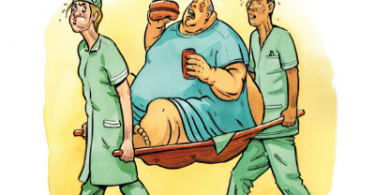Introduction
Uterine discharges from the uterus after parturition are highly related with the spread of infections and the first target site is the udder. Metritis, a pathological condition of the uterus caused by microorganisms may cause mastitis and subsequent agalactia in animals that is, the MMA syndrome. Although mastitis or agalactia was reported from the field earlier, this complex syndrome was never reported in goats.
History and Clinical Examination
A three year old Marwari goat in her second lactation, weighing around 30 kg was reported to the Veterinary Hospital with a history of parturition two days before and signs of anorexia, dullness, reduced water intake, putrified foul smelling discharges from the vagina, swelling of the udder and very low milk secretion with white flakes from both quarters.
Clinically, the animal showed rise of body temprature upto 104.5F, depression, suspended rumination, pale conjunctiva (anemia), rough body coat and putrified red-yellow discharges from the vagina. Secretions from both quarters were subjected to indirect diagnostic tests like Modified California Mastitis Test (MCMT) and Modified White Side Test (MWST) as per Tijare (1997). Milk secretions from both the quarters were strongly positive (+++). Depending upon clinical examination and diagnostic tests, the case was diagnosed as Metritis – Mastitis – Agalactia Syndrome
Treatment
The goat was treated with Inj. Anistamin (Chlorpheniramine maleate) 1 ml, Inj. CFLOX (Ciprofloxacin) 5 ml and Inj. Melonex (Meloxicam) 3 ml, intramuscularly for five days and Bolus. CFLUX –TZ (Ciprofloxacine + Tinidazole) with deep intrauterine administration for three days. Owner was advised to give Bolus Involon (ayurvedic) 1/2, twice a day for three days and orally Pow. Maxmmidium (multivitamins and microminerals) 10 gm, once daily for five days with some concentrates and jaggery. From the sixth day onwards, homeopathic remedies – Five phos 30 + Ricinus communis 30 + Urtica urens 30, two times daily was advised orally. From the second day, the goat showed a positive response and on the fifth day it had completely recovered with no abnormal discharges from the vagina. The milk samples from both the quarters was found negative for MCMT and MWST test. Milk production resumed to about 1 litre on the tenth day of treatment and 2 litres on the thirtieth day of treatment.
Discussion
The problem of lactational insufficiency (agalactia) complicated with udder (mastitis) and uterine infections (metritis) was observed in this goat. Microorganisms may be the causative agents of this syndrome in animals. In the standing position, the gravitational force causes the uterine discharges to descend thorugh the genitalia via the perineum to the teat orifice, whereas in the sitting position, soiling of floor conveniently spreads infection to the teats. Further reduction or lack of milk secretion may also be related to predisposing mineral deficiencies, nutritional status, hormonal imbalance or hormonal defects and in some animals incomplete development of mammary glands (Madrewar, 2006) may be responsible.
With the above treatment, the goat was completely cured and it resumed it’s health and normal milk secretion. Besides the symptomatic treatment, antibiotics along with anti-inflammatary drugs were used. However, some residual effects of these drugs also occurs. Here the case was treated with allopathic, ayurvedic and homeopathic drugs.
References
- Madrewar, B.P. (2006). Therapeutics of Veterinary Homeopathy and Repertory. Reprint Second Edition, B. Jain Publishers Pvt. Ltd., Paharganj, New Delhi
- Tijare, D.B. (1997). M.V.Sc Thesis, J.N.K. V. V. Jabalpur (MP)





